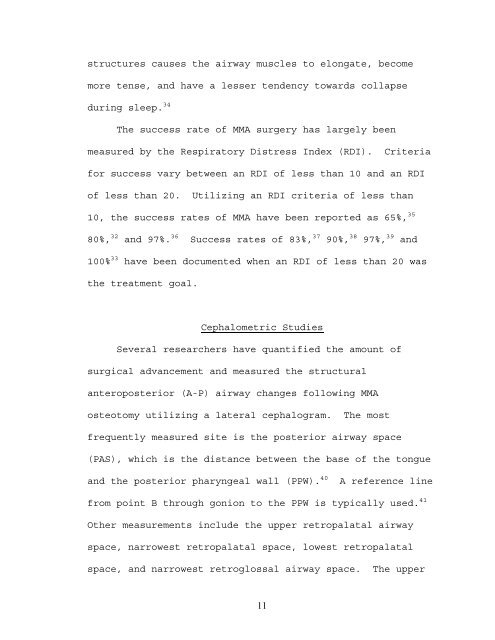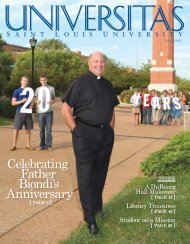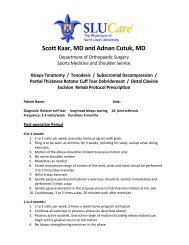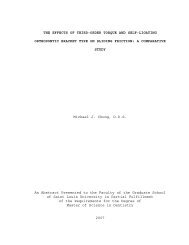PHARYNGEAL AIRWAY VOLUME FOLLOWING ...
PHARYNGEAL AIRWAY VOLUME FOLLOWING ...
PHARYNGEAL AIRWAY VOLUME FOLLOWING ...
You also want an ePaper? Increase the reach of your titles
YUMPU automatically turns print PDFs into web optimized ePapers that Google loves.
structures causes the airway muscles to elongate, become<br />
more tense, and have a lesser tendency towards collapse<br />
during sleep. 34<br />
The success rate of MMA surgery has largely been<br />
measured by the Respiratory Distress Index (RDI). Criteria<br />
for success vary between an RDI of less than 10 and an RDI<br />
of less than 20. Utilizing an RDI criteria of less than<br />
10, the success rates of MMA have been reported as 65%, 35<br />
80%, 32 and 97%. 36 Success rates of 83%, 37 90%, 38 97%, 39 and<br />
100% 33 have been documented when an RDI of less than 20 was<br />
the treatment goal.<br />
Cephalometric Studies<br />
Several researchers have quantified the amount of<br />
surgical advancement and measured the structural<br />
anteroposterior (A-P) airway changes following MMA<br />
osteotomy utilizing a lateral cephalogram. The most<br />
frequently measured site is the posterior airway space<br />
(PAS), which is the distance between the base of the tongue<br />
and the posterior pharyngeal wall (PPW). 40 A reference line<br />
from point B through gonion to the PPW is typically used. 41<br />
Other measurements include the upper retropalatal airway<br />
space, narrowest retropalatal space, lowest retropalatal<br />
space, and narrowest retroglossal airway space. The upper<br />
11

















